17 Dec

Several years ago, I worked in a startup with no marketing budget.
No one had any marketing experience either. Being the only person who had read a couple of marketing books, I was put in charge of the marketing strategy.
Without any know-how or marketing dollars, I read a couple of SEO blogs and tried implementing their strategies.
And it worked.
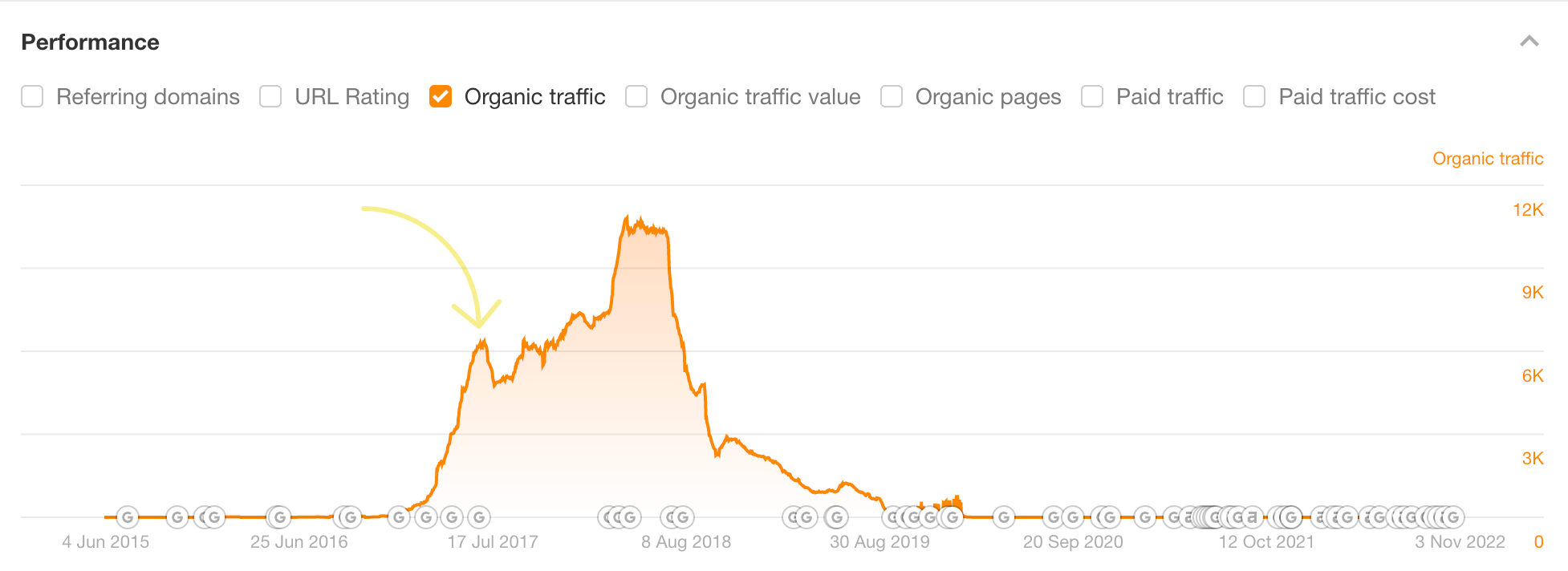
Sidenote.
Due to business challenges, the company no longer exists, which explains the sudden decline in traffic.
With the proper guidance, anyone can do SEO by themselves. You just need to know how to get started.
That’s what this guide is for.
Let’s begin.
If Google cannot find, crawl, and index your pages, it doesn’t matter what SEO tactics you pull out of the hat. Your pages just can’t rank.
So the first step is to make sure Google can do all of the above for your site.
The easiest way to see if any issues are hindering Google is to audit your website. You can do this by signing up for our free Ahrefs Webmaster Tools (AWT) and using Site Audit to run a crawl of your website.
When the crawl is done, you’ll see all the top issues plaguing your site. Click on the number in the Crawled column to see which URLs these are.
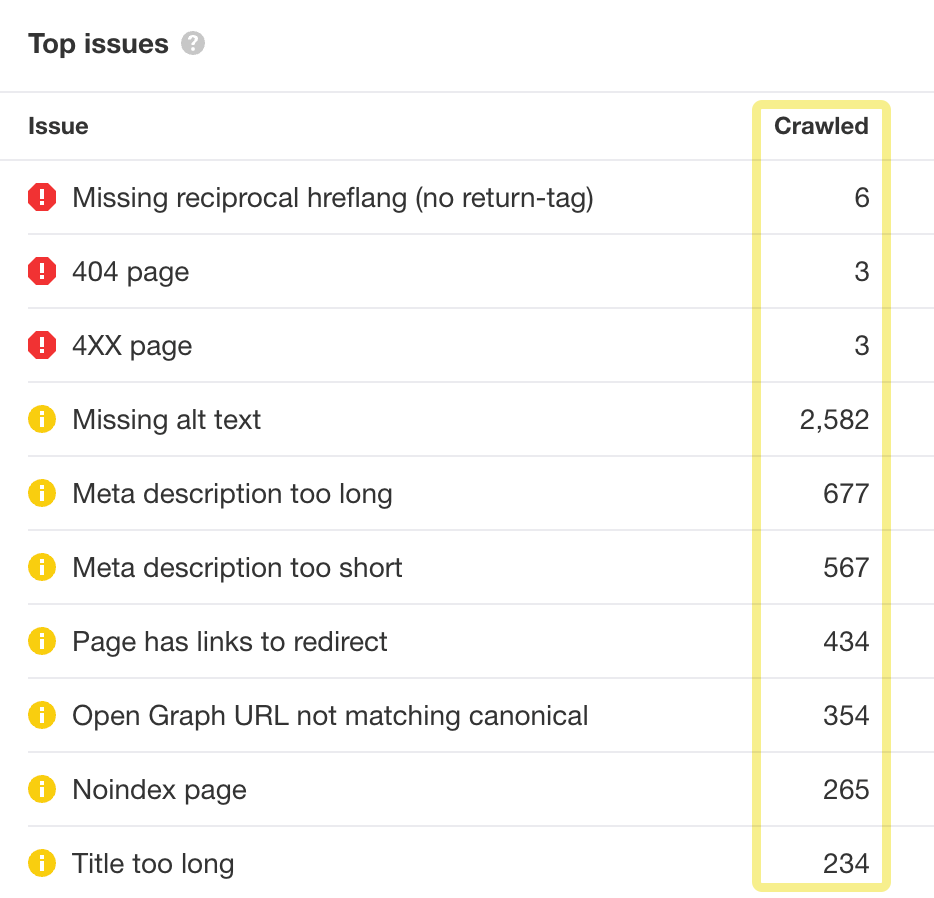
You can also click on the issue itself to see why it’s a problem and how to fix it.
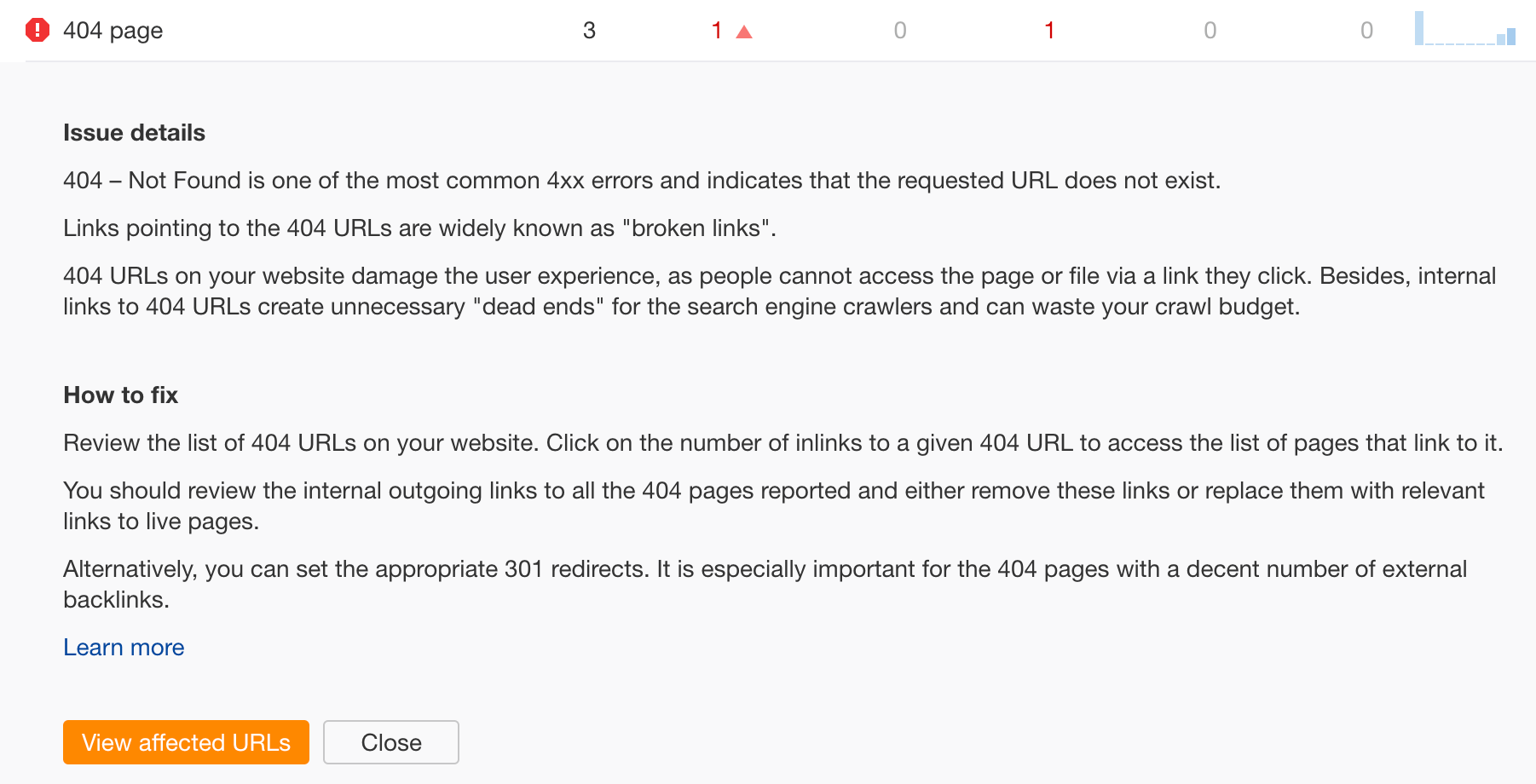
To get search traffic, you need to target the words and phrases your potential customers are searching for. You can find what these are by doing keyword research.
Here’s the easiest way to get started. You can:
- Go to Ahrefs’ Keywords Explorer.
- Enter one or a few relevant keywords related to your website (e.g., if I were a massage therapist, I might enter massage therapy, back pain, back pain relief, shoulder pain relief, and more).
- Go to the Matching terms report.
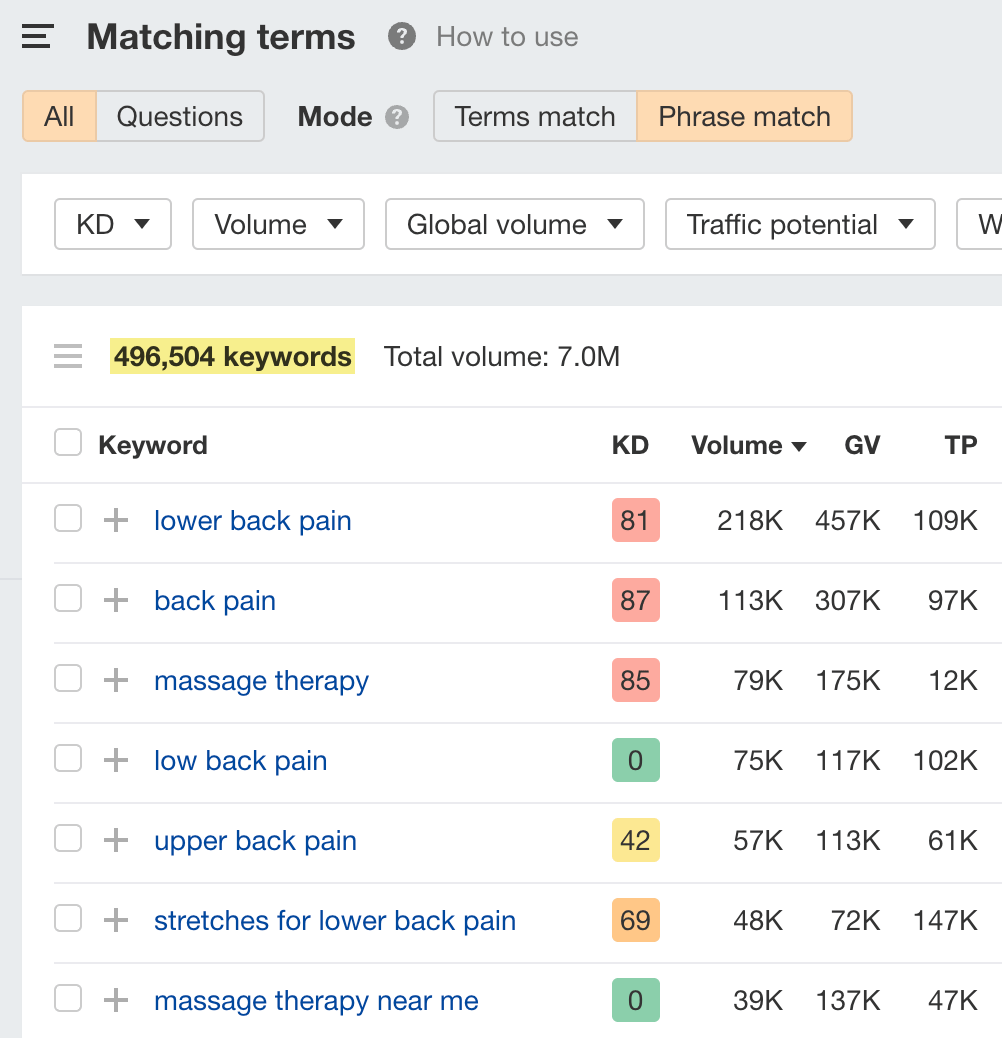
Here, you’ll see over 400,000 potential topics. But that’s too many. So you’ll want to reduce the list to something manageable. Specifically, you’ll want to target keywords that can potentially send you tons of traffic but are not competitive.
We do this by using two filters:
- Traffic potential (TP) – TP is the estimated amount of search traffic you can potentially gain if you rank #1 for that topic. We can set it to a minimum of 100 to find topics that actually send traffic to your site.
- Keyword Difficulty (KD) – KD gives an estimation of how hard it is to rank in the top 10 search results for a keyword. The lower the number, the “easier” it is. While it does depend on your site’s “authority,” you can start with a reasonable number like 20.
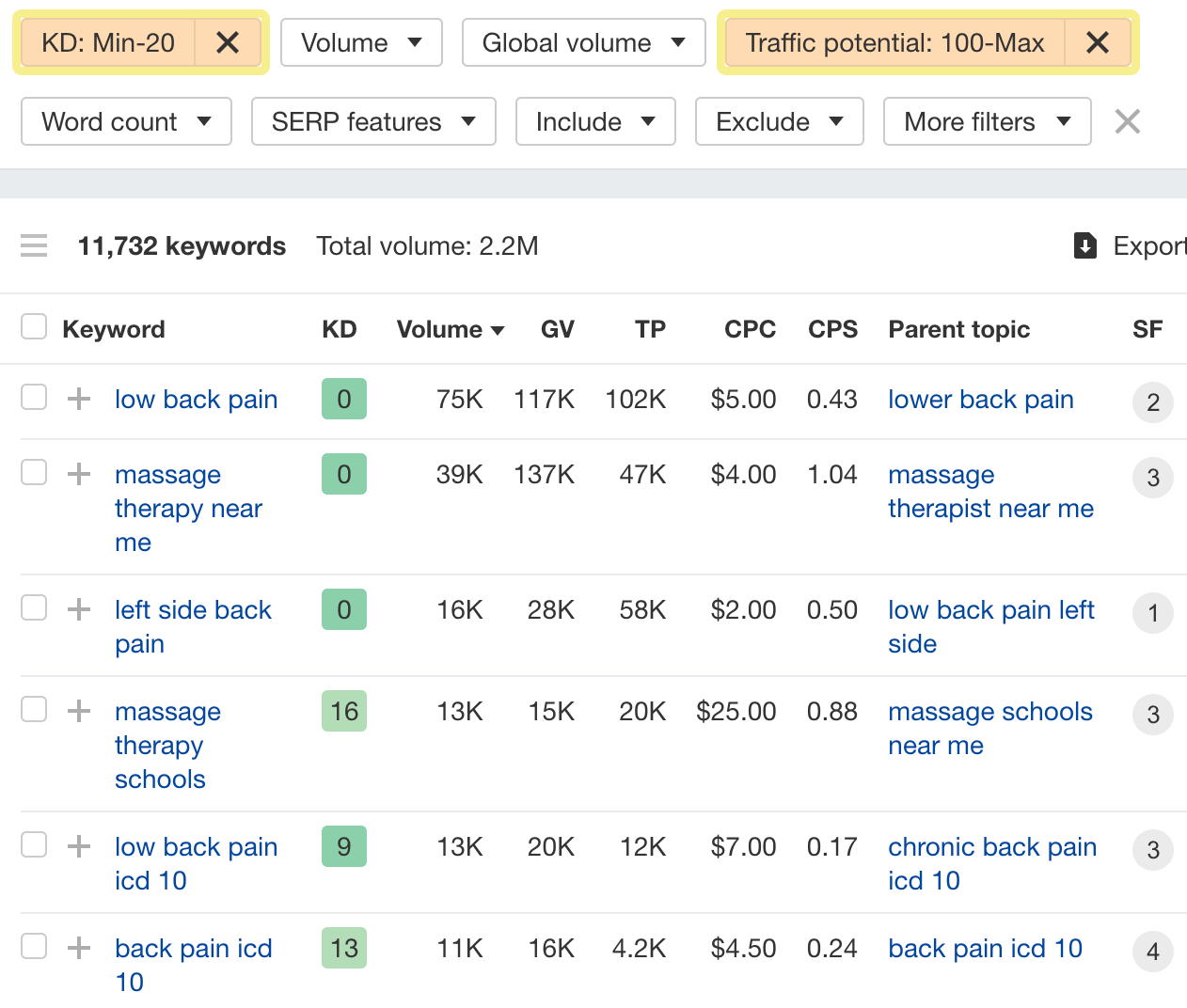
This list is much more workable. Make sure you manually review each keyword to see if it’s relevant to your business.
Learn more: Keyword Research: The Beginner’s Guide by Ahrefs
Creating search-optimized pages is no longer about stuffing as many target keywords as possible. Keyword stuffing died over a decade ago. Today, Google can easily understand synonyms and semantically related words.
Then, how do you create pages optimized for search? Here’s how.
Match search intent
Google wants its users to be happy. To it, that means figuring out why the searcher is searching —i.e., search intent—and then showing them the most relevant results.
So if you want to rank high on Google, you’ll have to match search intent.
Fortunately, figuring out search intent is relatively simple. Since Google already works to serve the most relevant results, we can look at the current top-ranking pages to understand search intent.
Specifically, we want to analyze the three Cs of search intent:
- Content type – Is the primary type of content a blog post, product page, video, landing page, or something else?
- Content format – Is the primary format a how-to guide, listicle, review, opinion piece, news, or something else?
- Content angle – Is there a primary angle, such as the current year or content aimed at beginners?
For example, let’s suppose you want to cover the topic “how to save money”:
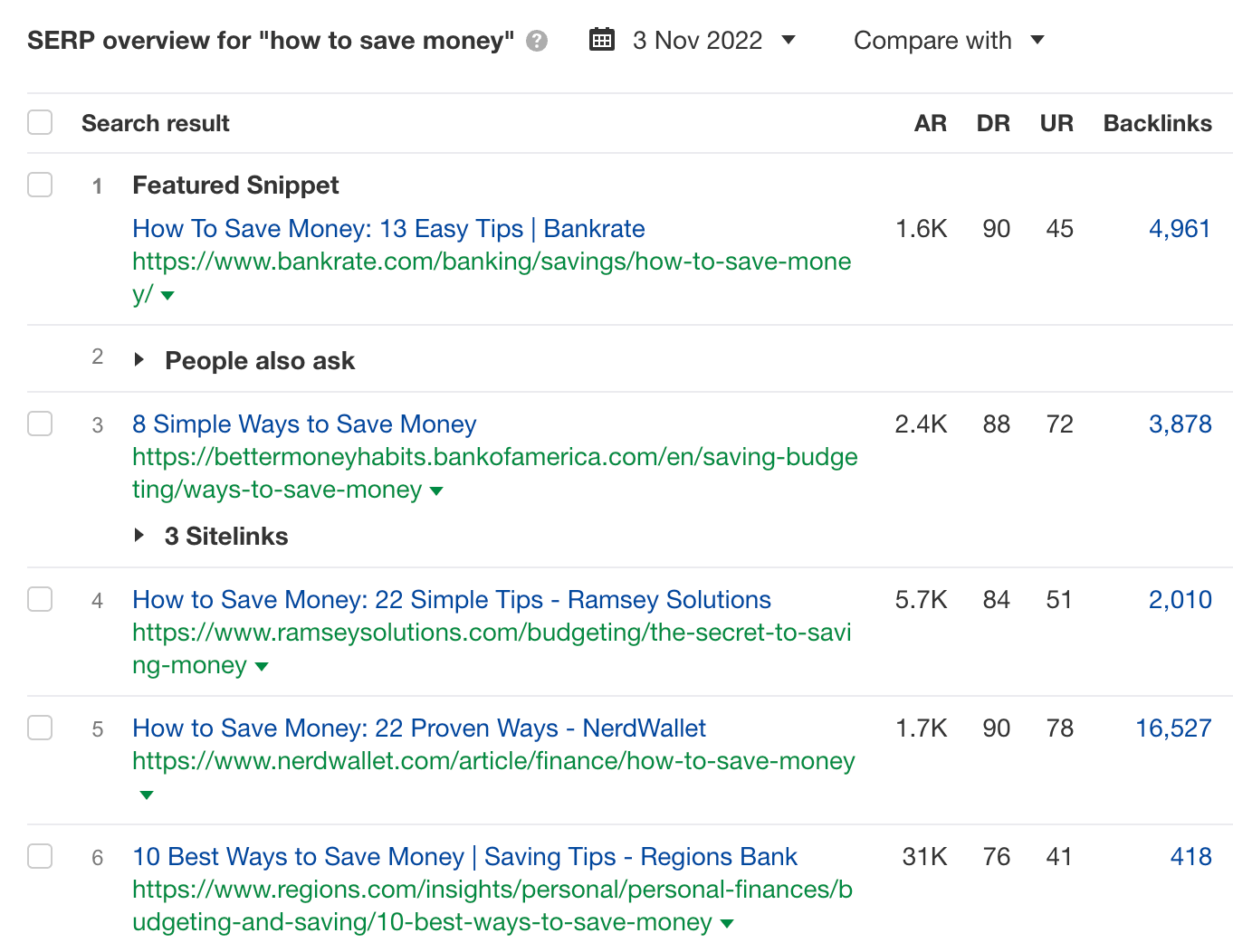
Here’s what we’ll learn when analyzing the SERPs:
- Content type – All of the top-ranking pages are blog posts.
- Content format – Surprisingly, instead of a how-to guide, people are actually looking for tips.
- Content angle – Simple/easy, proven, and fast are potential angles.
So we could potentially create an article titled “XX Proven Ways to Save Money.”
Learn more: What Is Search Intent? A Complete Guide for Beginners
Cover the topic in full
The best result for most queries usually covers everything searchers want to know about the topic.
An easy way to find out what subtopics and important points searchers want to see is to run a content gap analysis:
- Go to Ahrefs’ Keywords Explorer
- Enter the keyword you’re targeting
- Scroll down to the SERP overview
- Check a few of the top-ranking pages
- Click Open in and choose Content gap
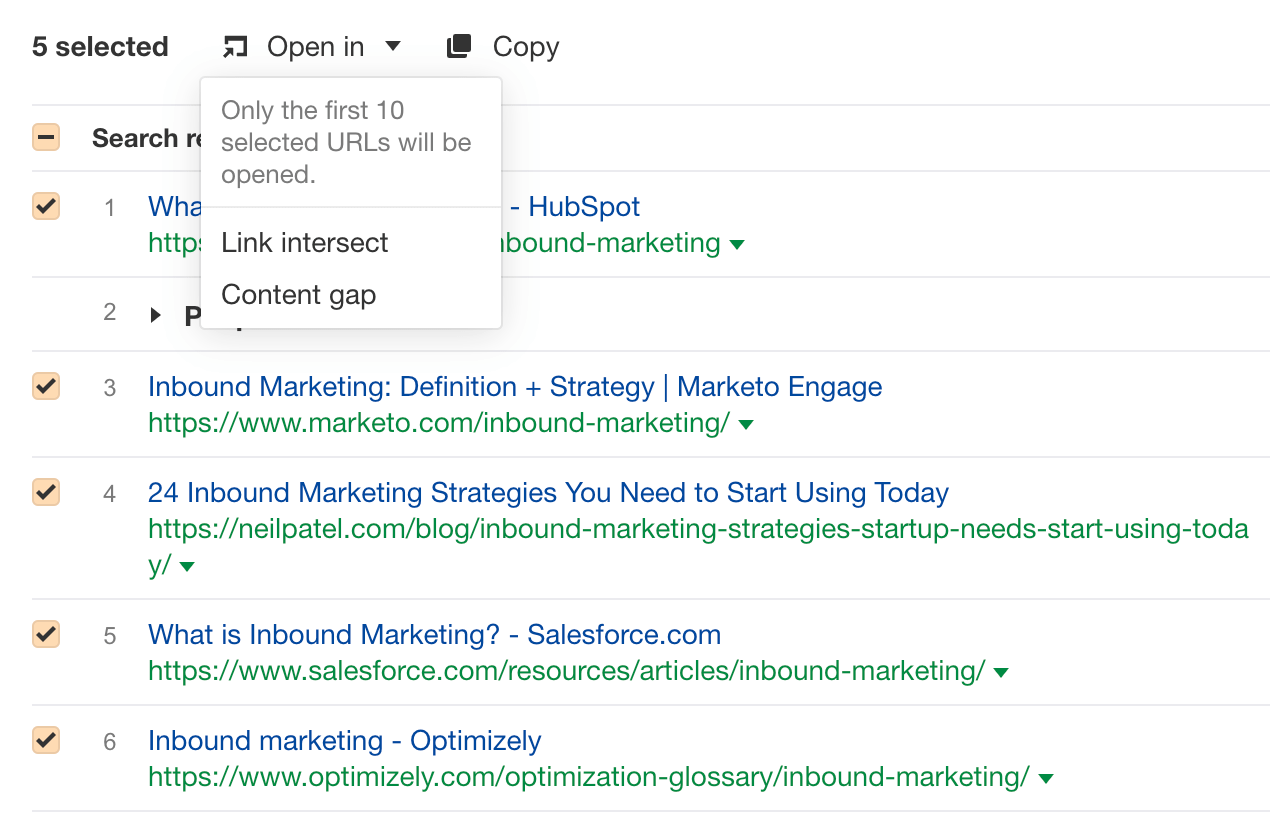
In this example, we’re targeting the keyword inbound marketing. You can see that many of these keywords map to potential subtopics:
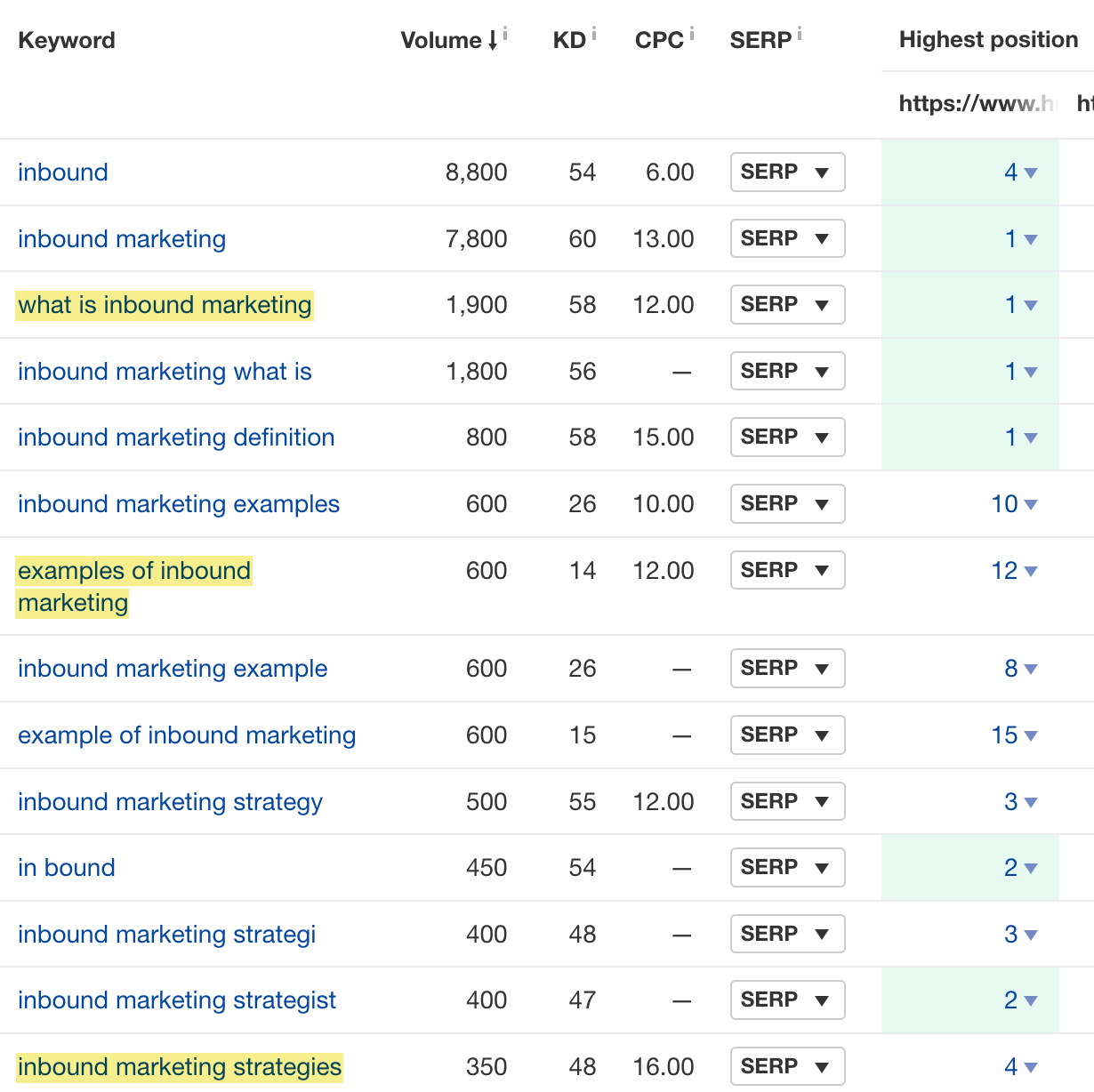
These subtopics…
- What is inbound marketing
- Inbound marketing examples
- Inbound marketing strategies
… could make perfect H2s for our blog post.
Make your content unique
You should cover the topic in full. But that doesn’t give you leeway to copy-paste what’s already on the top-ranking pages.
After all, copycat content can neither stand out nor incentivize people to link to you (and links are an important ranking factor).
So you’ll want to make sure your content is unique. Here are some ideas on how you can do that:
- Personal experience – If you’ve successfully implemented something, write about it.
- Expert interviews – Reach out and interview experts in your field or ask them to contribute an opinion to your piece.
- Crowdsource – Get multiple people to contribute their opinions, expertise, and ideas.
- Original research – Add data to your post. You can do this by running a study, survey, or poll.
- Contrarian – Be the devil’s advocate. Consider an opposing viewpoint.
Make your content simple and easy to read
Content that’s hard to read is not only bad for SEO, but it’s also bad for business. How can you convince someone to buy your product if your copy can’t even be understood?
Keep your copy nice and simple. Use these tips:
- Avoid big words. Don’t say erroneous when you can say wrong. Always use simple language. If in doubt, use Hemingway to check your copy.
- Use formatting like bolding, italics, and lists to break up chunks of copy.
- Include multimedia like images, videos, and GIFs to illustrate your points and break up walls of text.
Sprinkle on your on-page SEO
This is the “icing” on the cake that makes it extra clear to Google and searchers that your page is relevant.
Follow these best practices:
- Use the keyword in the title – This is usually already included in your headline. But if you haven’t, see if you can work it in. A similar variation works too.
- Write a compelling meta description – While not a Google ranking factor, it helps to sell your article in the search results.
- Use short, descriptive URLs – Such URLs make it easy for searchers to understand what your post is about. The simplest way is to make the slug your topic.
- Add alt text to your images – Google uses alt text to understand images. Create a concise but accurate one for every image you use.
Learn more: On-Page SEO: The Beginner’s Guide
Links are an important Google ranking factor. You’ll likely need them to rank higher.
Link internally
When it comes to links, many people neglect internal links. But they’re actually important—not only because they pass authority between your pages, but they also help Google discover and understand pages.
The easiest way to find relevant internal link opportunities is to use the Link opportunities report in Site Audit. You’ve already run a crawl in step #1, so all that’s left to do is to see what internal links the report suggests you should add.
For example, Site Audit suggests that we can potentially add an internal link to our post on Google’s URL Inspection tool on our post about submitting websites to search engines.

Learn more: Internal Links for SEO: An Actionable Guide
HARO
HARO (Help a Reporter Out) is a free service connecting journalists to sources and sources to journalists. If you’re an expert in your niche, you can easily provide a quote and the journalists may link to your site.
Getting started is easy—you just have to sign up as a source on the website.

Then, you’ll receive emails with queries from journalists working for various publications. However, most queries will likely be irrelevant to you, so we recommend setting up a Gmail filter:
- Click the search options filter
- Set the “From” field to [email protected]
- Set the “Subject” to “[HARO]”
- Set “Has the words” to keywords you want to monitor (use the OR operator to list multiple keywords here)

For the best results, only respond to queries where you have relevant expertise.
Replicate your competitors’ backlinks
If someone is linking to your competitors, chances are they will link to you too. So you merely have to find out who’s linking to them and not you and find a way to replicate those links.
Here’s how:
- Enter your domain into Ahrefs’ Site Explorer (set it to Exact URL)
- Go to the Link Intersect tool
- Add a few competing homepages in the empty fields (set them to Exact URL)
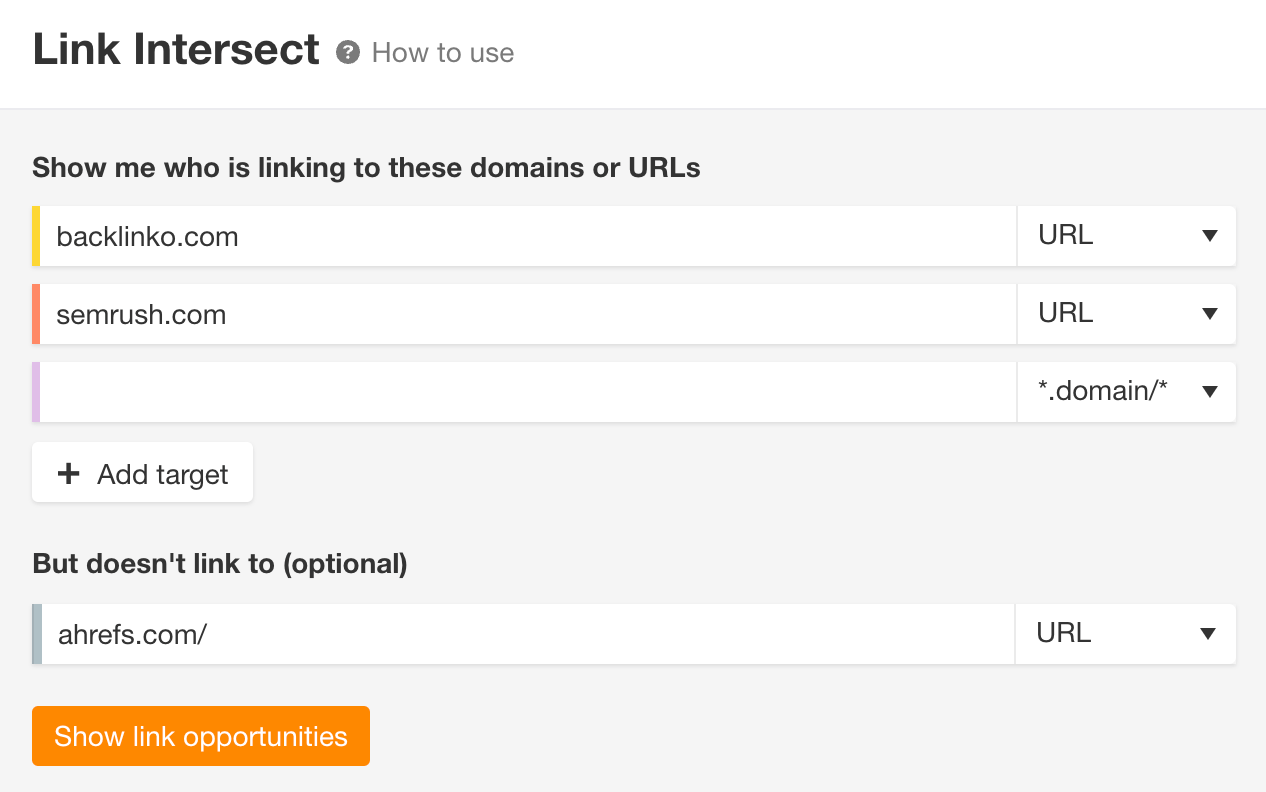
Go through the results to see if there are any links you can potentially replicate.
For example, the website below links to both of our competitors. Looking closely at the links, we see they’re both podcast interviews:


Given that the host has already interviewed two of our competitors, they may also be interested in interviewing us.
Finally, you’ll need to track some metrics to know if you’re going down the right path.
The exact metrics you’ll need to track depend on your goals, but some of the most common ones are:
- Organic traffic – All non-paid clicks from search engines. If it’s trending upward, it may be a sign that your SEO efforts are paying off. Tools you can use: Google Search Console and Ahrefs’ Site Explorer (free in AWT).
- Keyword rankings – The organic ranking positions in the search results for the keywords you’re targeting. You can track this using Ahrefs’ Rank Tracker.
- Referring domains – Number of websites linking to your site. We’ve already established earlier that backlinks are an important Google ranking factor. So you’ll want your site to get more of them over time. You can see how many referring domains your site has in Site Explorer.
- Search visibility – How visible your brand is on the market. You can track this by pasting the keywords that matter to you in Rank Tracker. Then go to the Competitors overview tab and check the Visibility column.
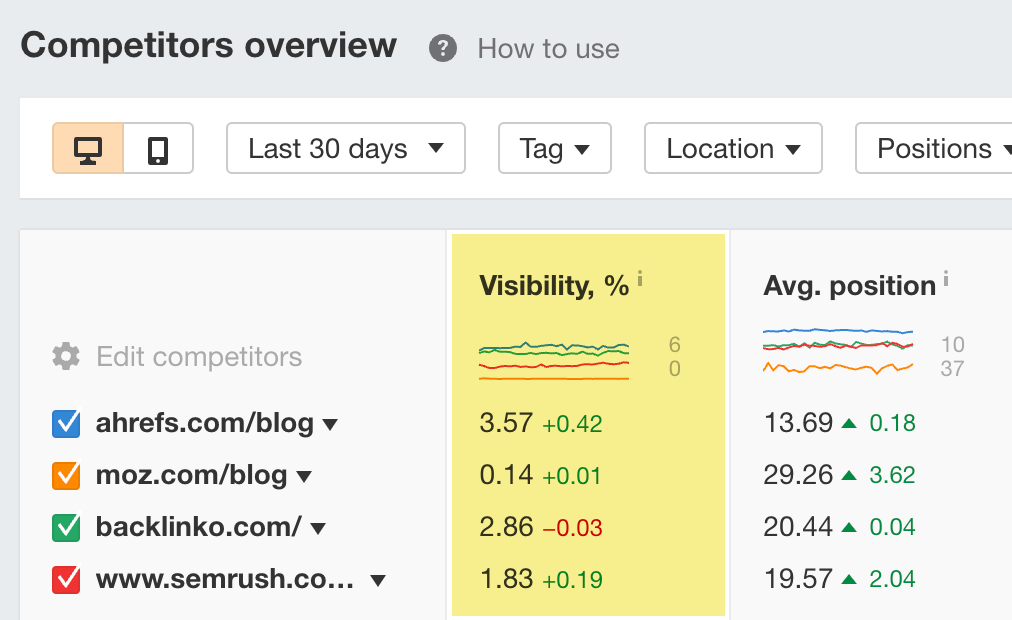
Final thoughts
This simple DIY SEO guide covers the fundamentals of SEO.
You can follow this guide over and over again to optimize your site and rank for meaningful and relevant keywords.
Then as you experience more success, you may even consider hiring an agency to take things to the next level. Or if you prefer to continue the DIY route, you can learn more on our blog, YouTube channel, and Academy.
Any questions or comments? Let me know on Twitter.
Source: ahrefs.com, originally published on 2022-12-15 07:23:00
Connect with B2 Web Studios
Get B2 news, tips and the latest trends on web, mobile and digital marketing
- Appleton/Green Bay (HQ): (920) 358-0305
- Las Vegas, NV (Satellite): (702) 659-7809
- Email Us: [email protected]

© Copyright 2002 – 2022 B2 Web Studios, a division of B2 Computing LLC. All rights reserved. All logos trademarks of their respective owners. Privacy Policy

![How to Successfully Use Social Media: A Small Business Guide for Beginners [Infographic]](https://b2webstudios.com/storage/2023/02/How-to-Successfully-Use-Social-Media-A-Small-Business-Guide-85x70.jpg)



![How to Successfully Use Social Media: A Small Business Guide for Beginners [Infographic]](https://b2webstudios.com/storage/2023/02/How-to-Successfully-Use-Social-Media-A-Small-Business-Guide-300x169.jpg)


Recent Comments